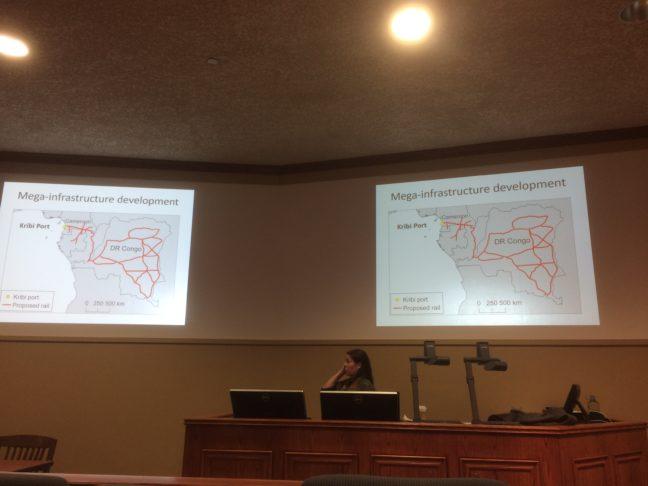Saving species in Africa comes down to prioritization, Nicola Anthony, a professor from University of New Orleans told University of Wisconsin student and faculty Thursday.
Anthony — who received a master’s degree from the University of Wisconsin in conservation biology and sustainable development — mapped out her work as part of the ongoing Weston Roundtable Series.
Specifically, Anthony talked about her work as it involves the Central Africa Biodiversity Alliance, an organization that seeks to take preventative steps in the fight against climate change in Cameroon, Nigeria and Gabon.
UW expert looks to encourage students to fight for cleaner future
Since colonization ended in the 1960s, there has been a scramble for African resources, Anthony said. In the aforementioned countries, multinational corporations have privatized nearly 70 percent of rainforests, agriculture has expanded widely and mining operations have increased.
But CABA’s primary focus is on proactive responses for helping animals, Anthony said, as 30 percent of animals in the affected regions could be at risk for extinction if temperatures continue to rise.
To do this, her team decided to identify and prioritize regions for biodiversity conservation that have the best capacity to adapt to climate change.
Her team started this process by collecting feces and hair from nine focal species throughout distinct Central African regions and then ran the DNA through a model to determine which area had the highest adaptive evolutionary potential.
Through much work, Anthony said they ascertained the most genetically adaptive animals were located in the Northern Forest Savanna Mosaic ecoregion and the Upper Savanah Plateau. Their computer model took into account environmental barriers in understanding patterns of adaptive traits.
The field research and data gathering lasted from 2013-15 and had three scientific goals:
- To quantify genomic and phenotypic variability or find markers within the DNA that signaled a high likelihood of adaptation.
- To map adaptive variation across the Central African region to understand which geographic areas maximized evolutionary potential.
- To incorporate socio-economic data into their “protected area prioritization” as to minimize effects on the local economy.
University of Michigan professor discusses approaches to sustainable decision-making
From their findings, CABA concluded that elevation and strong precipitation gradients are common to important centers of genetic adaptive variability, Anthony said.
CABA’s work has inspired various spinoff projects that are still ongoing, Anthony said. CABA and its derivatives continue to study ways to assess vulnerability to future climate change.
“CABA works to develop and integrate a framework for conserving biodiversity under climate change in a socio-economic and environmental way,” Anthony said.
















